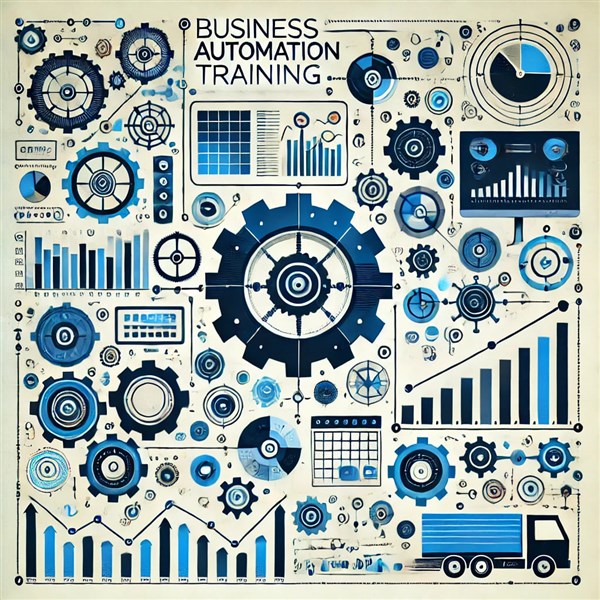We're open through the holidays to support your upskilling goals — Which training do you want to book?
We're open through the holidays to support your upskilling goals — Which training do you want to book?
Unable to find what you're searching for?
We're here to help you find it
In today’s ultra-competitive landscape, businesses are under constant pressure to do more with less — less time, fewer resources, smaller teams, and tighter budgets. From startups to multinational corporations, everyone is chasing operational efficiency without sacrificing quality or customer experience. One of the most effective ways to achieve this balance is through business automation — and more importantly, business automation training.
While automation tools are widely available, their full potential can only be unlocked by a workforce that understands how to implement, manage, and optimize them. This is where training programs in business automation come in — equipping teams with the knowledge and skills needed to reduce operational costs while enhancing productivity and scalability.
Let’s dive into how business automation training can significantly lower operational costs and why every modern business should prioritize it.
Business automation training is a structured program designed to teach individuals or teams how to use technology to automate repetitive, manual business tasks. It covers tools, techniques, best practices, and real-world applications in areas like:
Training can range from basic tool-specific courses to strategic-level programs that teach process mapping, return on investment (ROI) analysis, and change management in automation.
Below are the key ways in which automation training translates into direct cost savings:
Trained employees know how to automate their own workflows.
Rather than hiring more people to handle increasing workloads, trained teams can use automation to manage tasks such as:
This reduces the need for manual, low-value work and allows teams to focus on strategic tasks. Companies can delay or avoid hiring additional headcount — a major operational expense.
👉 Example: An accounts receivable clerk automates invoice reminders, cutting the department’s manual hours by 30%.
Manual data entry or process handling is often error-prone. Errors lead to:
Trained professionals build and monitor automation flows with checks and validations in place. They understand how to implement tools like robotic process automation (RPA), ensuring data consistency and compliance — thereby avoiding expensive mistakes.
👉 Example: A logistics team uses RPA to eliminate shipment mislabeling, saving thousands on refunds and reprocessing.
Speed is not just a performance metric — it’s a cost factor. Delays in approvals, document processing, or customer responses can:
With automation training, teams learn to streamline tasks like onboarding, ticket routing, and approval flows, enabling faster turnaround and lower support overheads.
👉 Example: An HR team reduces the average employee onboarding time by 50%, cutting training hours and accelerating productivity.
Many companies invest heavily in software (like CRMs, ERPs, or marketing tools) but underutilize them. Trained employees know:
This reduces the need for additional software investments and ensures the business gets maximum ROI from current tools.
👉 Example: A sales team automates lead nurturing in their existing CRM without purchasing a third-party tool — saving subscription fees.
With automation training, business users (non-developers) can create, monitor, and improve workflows without constantly leaning on IT teams.
This lowers:
👉 Example: A marketing associate builds their own Zapier automation to sync lead data, avoiding weeks of developer backlog.
Training helps teams identify redundant or non-essential tasks — often hidden in complex processes. They can then:
This ensures better time utilization and eliminates operational waste.
👉 Example: A finance department consolidates four reconciliation steps into one automated process, freeing up analysts for forecasting.
Business automation training equips teams to design systems that scale. As the company grows, these systems handle increased workload without requiring proportional cost increases.
This is particularly valuable for:
👉 Example: A B2B SaaS company automates customer onboarding, supporting a 5x growth in user base without additional support hires.
📈 Bonus: Measurable ROI from Training
Organizations that invest in automation training often see a quick and tangible ROI. According to various industry reports:
Business automation training isn’t just for IT teams. It benefits:
✅ Final Thoughts
Business automation is no longer a luxury — it’s a necessity. But tools alone aren’t enough. It’s trained people who make automation work.
By investing in business automation training, companies empower employees to:
The result? Lower operational costs, greater scalability, and a workforce that’s not just efficient — but future-ready.
🎯 Smart businesses don’t just automate. They train their teams to automate intelligently.
Adopting automation is a strategic decision that can lead to substantial cost savings and efficiency improvements. However, to fully leverage its benefits, businesses need to invest in Business Automation Training. Koenig Solutions, a leading IT training Company, provides certifications in top technology courses, including Business Automation. Empower your workforce with the right skills to navigate the digital transformation journey successfully.
In today's competitive business environment, the ability to reduce operational costs while improving efficiency and productivity is the key to success. And that's exactly what Business Automation Training can help you achieve.
With Business Automation Training, your business can navigate the complexities of digital transformation and emerge as a leader in your industry.

Aarav Goel has top education industry knowledge with 4 years of experience. Being a passionate blogger also does blogging on the technology niche.










